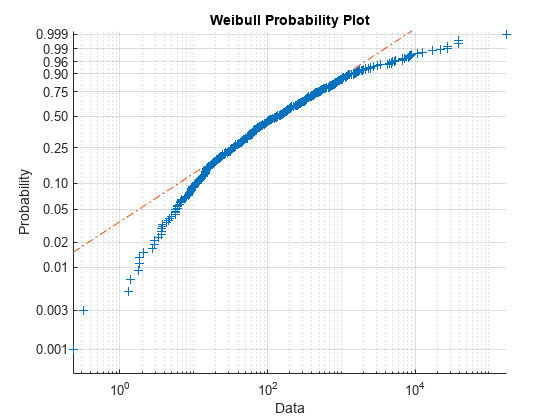lillietest
Lilliefors test
Syntax
Description
h = lillietest(x)x comes
from a distribution in the normal family, against the alternative
that it does not come from such a distribution, using a Lilliefors
test. The result h is 1 if
the test rejects the null hypothesis at the 5% significance level,
and 0 otherwise.
h = lillietest(x,Name,Value)
Examples
Input Arguments
Name-Value Arguments
Output Arguments
More About
Algorithms
To compute the critical value for the hypothesis test, lillietest interpolates
into a table of critical values pre-computed using Monte Carlo simulation
for sample sizes less than 1000 and significance levels between 0.001
and 0.50. The table used by lillietest is larger
and more accurate than the table originally introduced by Lilliefors.
If a more accurate p-value is desired, or if the
desired significance level is less than 0.001 or greater than 0.50,
the MCTol input argument can be used to run a
Monte Carlo simulation to calculate the p-value
more exactly.
When the computed value of the test statistic is greater than
the critical value, lillietest rejects the null
hypothesis at significance level Alpha.
lillietest treats NaN values
in x as missing values and ignores them.
References
[1] Conover, W. J. Practical Nonparametric Statistics. Hoboken, NJ: John Wiley & Sons, Inc., 1980.
[2] Lilliefors, H. W. “On the Kolmogorov-Smirnov test for the exponential distribution with mean unknown.” Journal of the American Statistical Association. Vol. 64, 1969, pp. 387–389.
[3] Lilliefors, H. W. “On the Kolmogorov-Smirnov test for normality with mean and variance unknown.” Journal of the American Statistical Association. Vol. 62, 1967, pp. 399–402.
Version History
Introduced before R2006a

